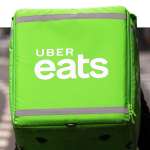Uber Works launches as platform for gig economy jobs

From helping you find a ride to delivering food right at your doorstep, Uber is expanding its business model to launch a staff hiring app in the US, helping businesses “fill empty shifts.”
Uber Works matches businesses looking to hire short term or contract staff with a pool of available workers. According to its website, that includes roles like general labor, warehouse, front and back of house, customer service, and cleaning.
Employers can seek suitable staff by adjusting filters such as services, availability, and salary while scrolling through a pool of candidates. At the same time, service providers can set up an account and start searching for jobs at nearby locations.
The app was tested in Chicago for a year and is now officially rolling out in the city, with plans to launch in other cities soon.
Considering the recent requirement on its home turf of California to reclassify gig workers (such as its drivers) as employees entitled to sick leave, holidays and other benefits, Uber Works’ partnership with staffing agencies, such as TrueBlue, is aimed to ensure that fair regulation for employees is central to the platform.
That means that while it will still cater to the ‘on-demand’ gig economy, workers will be employed by staffing agencies, and therefore able to receive accompanying benefits, such as sick leave and holiday pay.
What’s in store? (for businesses, workers)
In a blog post, the company said, “Uber Works can help businesses reduce scheduling headaches, weather seasonal variations, and staff up for unexpected demand”— the app is aimed to help businesses hire cheaper, faster and more effectively.
The concept of hiring staff through an app indeed simplifies and lowers the cost of hiring for many businesses that rely on recruitment agencies to manage staffing gaps at peak times, at short notice.
As for job seekers, they can apply to various jobs using the same CV and find temporary employment within a desired location. Workers can also keep track of their shifts in the app and fill in shifts without the hassle of going through the long recruitment process.
YOU MIGHT LIKE

Digital ID could help secure trust in the gig economy
Uber Works in automation
Other apps, with similar concepts, already exist. That includes Wonolo in the US, for example, while in the UK, Switch, JobSwipe, and Shapr are meeting the demands of a growing freelance workforce and need for simplified recruitment to fill up short term vacancies.
However, Uber’s investment in supplying a logistical platform for temporary or gig workers could signify the rise of manual workers being displaced in jobs due to the rising adoption of automation technology.
The gig economy’s changing landscape
Uber Works may change the way businesses hire and fill in a shortage of workers by bridging the gap between unfilled positions and an available workforce through technology— it is anticipating a boom in ‘non-traditional’ working styles and side hustles, which will rise to 42 million workers in the US next year according to Deloitte.
The process of finding work via the app is quick, as workers won’t have to re-submit their credentials for every role. Now more than ever, manual jobs most at risk of displacement would benefit from staff hiring apps like Uber Works.
Uber’s move to launch a recruitment app contributes to the rapidly-expanding gig economy, but all ‘above board’, following the ruling in California which will likely set a precedent for other states in the US to follow.
Uber’s world-famous ride-sharing app is arguably the foremost pioneer of gig economy working, and Uber Works will allow the firm to reposition itself as a wider facilitator of this model, while also keeping its current platforms supplied with a legally robust supply of workers.









